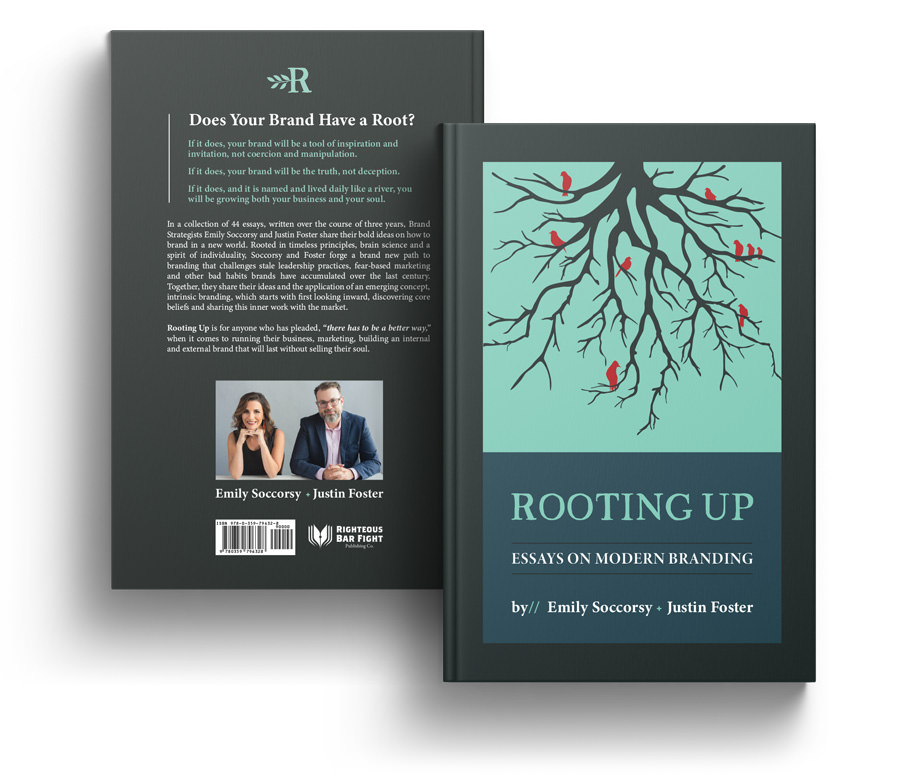Filed Under: 21st Century Branding, Beliefs-Based Branding
By Emily Soccorsy + Justin Foster
We believe and teach our clients that brands begin in conversations. In fact, we propose that you don’t actually have a brand until it is fueled by conversations.
This runs counter (as most of our ideas do) to the prevailing belief that brands begin in designing a logo or with a marketing campaign or with settling on your offerings. Nope.
It’s actually much more nuanced and difficult to craft a meaningful, rich conversation than to approve a logo or hire a marketing manager. That’s why most times leaders avoid really understanding their brand.
But why should you care? Because a deeper, more impactful discussion about your brand — and your beliefs, and the value it presents — will translate into a stronger connection between you and the humans who will see value in what you are offering the world and offer to pay you that value.
To begin creating a rich seedbed for deeper brand conversations, here are three suggestions from us.
- Deal with your insecurities. If you have hesitation and find yourself ill-at-ease about aspects of why you exist as a company or what your main objective is or what you are offering to the world, these must be dealt with before any conversations. Do not use conversations to “feel out” offerings or to help you decide why you exist in the world. Go internal first, so that your external brand voice is cohesive, and on this foundation of truth, inspires trust. Key question: What feels shaky about your brand?
- Don’t project. Just as in personal conversations, we humans tend to project our biases, views and perceptions on the other person to whom we are speaking. In marketing, brands tend to project onto audiences what they think the audience needs. They make assumptions, pre-prosecute their case on shifty information and/or use persuasion tactics to get their point across. Instead of projecting, share your brand’s beliefs and values. This enriches the conversation and puts you in position to listen and ask personalized questions. Key question: What questions do I need to ask of my audience and how can I best listen?
- Embrace your anomaly. Most established brands want to be perceived as different without actually being different! Leaders have been trained to blend in, don’t offend, make nice — all of which produce the most expensive branding strategy: boredom. We posit that whatever makes you an anomaly can make you a brand. Weird is good, not bad! Weird is an experience that is memorable. When you can speak to your anomalous nature and explain why it expresses something true about your brand, it invites others to join you. Key question: What makes my brand most weird?
None of these areas can be delegated to your marketing team or ad agency. As the leader, it’s on you to do the deep work necessary to become a brand. This takes an investment in an inner journey – with yourself, your leadership team and your culture. The pay off this: less pretense means more brand equity. More brand equity means greater reach, more influence and better conversations.
Emily Soccorsy + Justin Foster are cofounders of the intrinsic branding practice known as Root + River. Together with their defiantly different clients, they uncover then articulate the foundational elements of the brand. Then, they provide brand strategy and brand coaching as the brand is rolled out internally and externally. Obsessive about language and differentiation, Emily + Justin are also authors and speakers. Follow @rootandriver @fosterthinking and @emilyatlarge.
